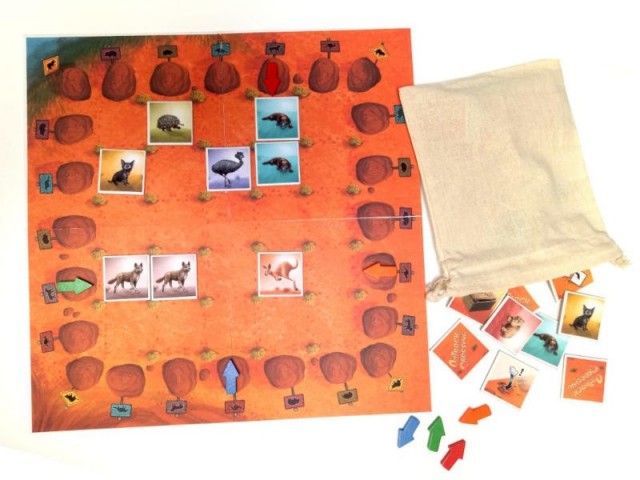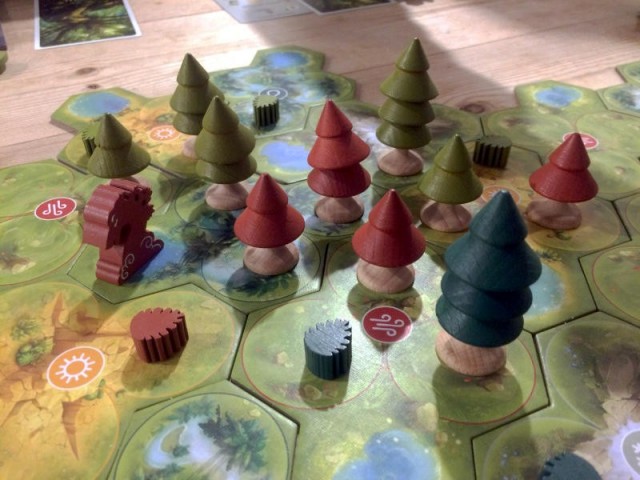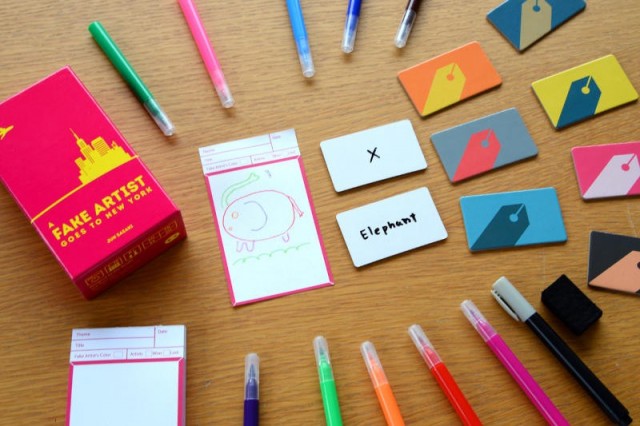I would walk through fifty torii, and I would walk through fifty more. Just the be the man who walked through one hundred torii just to place a Samurai at your door.
The One Hundred Torii is a relatively simple tile laying game with a metric chit ton of pieces for resources and scoring. It feels kind of odd that the majority of the set-up time has zero to do with the actual tiles you are placing and everything to do with the bits and pieces used for scoring. The game is about creating paths through a traditional Japanese garden and scoring points for the shortest path from a resource that you just placed and another of the same type within the garden (with bonus resources for each Torii you pass though).

The first few plays you are figuring out decent placement, optimizing points, and deciding what, pardon the pun, path is best for gathering points. And the more experience you have with the game, the more PPPP (Perfect possible placement paralysis) creeps in. Sure, a quick glance at the board will probably allow you to locate a place you can put one of your two tiles to gather a couple of items. But, there might be a place that will net you three or more items and that is enough of a bump that you should probably seek it out, right? But that puts you into this weird, uncomfortable position: you feel the “pressure” of making everyone else wait why you go over the scenarios in your head about placement. It starts feeling like you are balancing the amount of time “wasted” looking for a perfect place to put a tile versus “valuing” the other players time and simply just selecting a “good” spot.

The more tiles you place, the more locations you need to examine for your next possible tile placement. So, One Hundred Torii never really gets “rolling.” The length of each turn takes longer and longer as you progress in the game. This is only reinforced by the fact that all those single resource/landmark chits you gather throughout the game are worth NOTHING during endgame scoring unless you reached the “five/ten of this item” plateaus that turn them into large landmark points. Now, those final turns mean you not only want the best possible resource return for your placement but you also want specific resources in a specific number to be able to covert them into points.
The pure “top down” view of the tiles isn't quite perfect for the game. It feels like the game readily admits this by having pop-out or magnified views for the landmarks on each tile. Even then, it can be hard to discern if a specific item in on Path A or Path B on a tile, leading you to place them only to realize, oops, it isn't actually connected to the path you thought.

There are also characters (and their associated actions) you can purchase with, initially, coins and, later, resources. This is a layer of depth that is definitely appreciated and helps elevate it to a higher level of challenge. The game also rewards purchasing the same character over and over with VP but that tops out after enabling their power three times. Maybe the best possible move isn't the character action that allows you to swap one tile to draw two more but, screw it, just do it for the VP. Unfortunately, the depth that the character actions add comes with more of the PPPP I mentioned earlier. Since you are spending landmark tokens to take these character actions, you really feel the pressure to make the best possible use of where and how you place them.
I realize that many are going to read this review and think I am solely focusing on the negative. But my initial trips though the Torii were fun and entertaining. However, I felt that each successive game was producing diminishing returns. It's never a good sign when you pull out a game, look at at the included chits and ask everyone assembled “Do we really want to play this?”Between the set-up, re-pack, and the possibility of prolonged turns, One Hundred Torii doesn't feel like it values everyone's time, even if that may seem like an odd thing to say about a game that can play in roughly forty-five minutes.
A review copy of this release was provided by the publisher.
 Games
Games How to resolve AdBlock issue?
How to resolve AdBlock issue? 





















